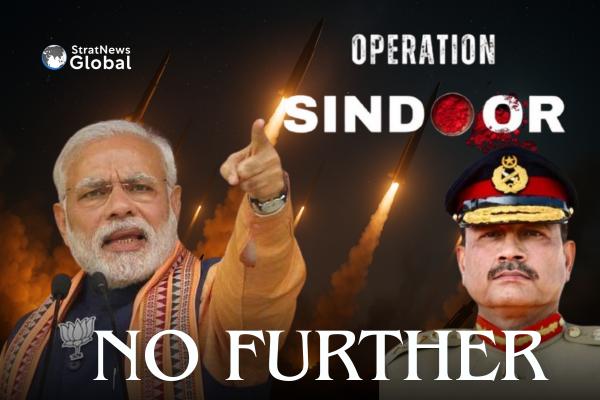In a moment widely seen as a turning point in South Asia’s military posture, India has delivered its most forceful message yet to Pakistan by way of Operation Sindoor: any further provocation will be met with all-out response.
Under Operation Sindoor, Indian forces launched a sweeping offensive targeting terror infrastructure deep inside Pakistan. The most significant strike hit the Jaish-e-Mohammed (JeM) headquarters in Bahawalpur, marking a direct blow to a group long nurtured by Pakistan’s Inter-Services Intelligence (ISI).
“This is no longer about proportionate response — it’s about escalation dominance,” said top Indian government sources. “Wahan se goli chalegi, yahan se gola chalega (If they fire bullets, we will launch shells).” The directive from Prime Minister Narendra Modi has now become India’s baseline response strategy.
Calibrated But Uncompromising Message
Government insiders called the strike India’s most powerful yet, using advanced precision munitions to destroy high-value targets. “This wasn’t just retaliation; it was a strategic signal to Islamabad — escalation will be answered with escalation,” a senior official said.
The genesis of Operation Sindoor lay in rising cross-border hostilities, including recent Pakistani-backed attempted attacks on Indian air bases. In response, PM Modi issued a clear directive: India would no longer absorb provocations silently.
No Diplomacy, Only Deterrence
In a marked departure from past patterns, no diplomatic backchannel was opened. There were no talks between National Security Advisors or Foreign Ministers. The only contact was between the Directors General of Military Operations (DGMOs)—a clear indication that India treated the situation as a military contingency, not a diplomatic one.
The U.S. Was Informed, Not Consulted
On the evening of May 9, U.S. Vice President JD Vance called Prime Minister Modi after Pakistan sought assistance. Modi made it clear that any future provocations from Pakistan would prompt a “stronger and more devastating” response from India. Later that same night, Pakistan launched attacks on 26 Indian sites, prompting India to retaliate even more forcefully.
By May 10, the Indian Air Force had launched precision strikes on military installations in Rafiqui, Muridke, Chaklala, Rahim Yar Khan, Sukkur, Chunian, Pasrur and Sialkot.
No Mediation, No Kashmir Talks
India also shut the door on third-party mediation. “There will be no talks unless it is about handing over terrorists,” a senior official emphasised. “And the only item left on the Kashmir agenda is the return of Pakistan-occupied Kashmir (PoK).”
Not One-Off, A New Strategic Normal
Sources said Operation Sindoor is ongoing, reflecting a new geopolitical normal. India’s position is clear: terror will be met with force, not restraint.
India’s three-fold strategic objectives were achieved:
- Military: PM Modi declared that terror camps in Bahawalpur, Muridke and Muzaffarabad have been “reduced to dust.”
- Political: India suspended the Indus Waters Treaty indefinitely, linking it to Pakistan’s cessation of terror support.
- Psychological: The strikes were deep, deliberate, and devastating, delivering a blunt message: “Ghus ke maarenge” (We will strike inside and hit hard).
International Messaging And The UN
India will present new evidence of Pakistan’s terror sponsorship to the UN Security Council next week during the UNSCR 1267 sanctions committee meeting. Meanwhile, External Affairs Minister S. Jaishankar spoke to U.S. Secretary of State Marco Rubio on May 1, asserting unequivocally: “We will hit the terrorists in Pakistan — and let there be no doubt about it.”
Acts Of War Will Be Treated As Such
Indian officials made it clear: any future act of terror will be treated as an Act of War, not a law-and-order issue. “This is not about restraint anymore. It’s about red lines — and Pakistan has been warned.”
















